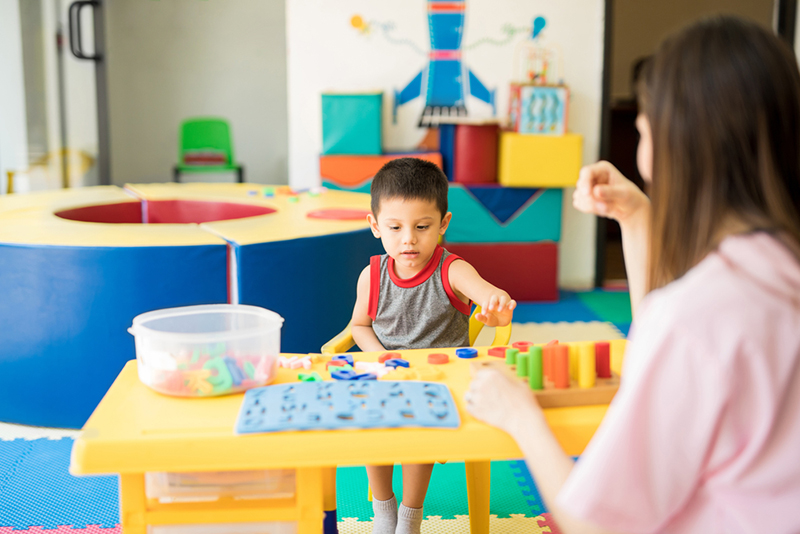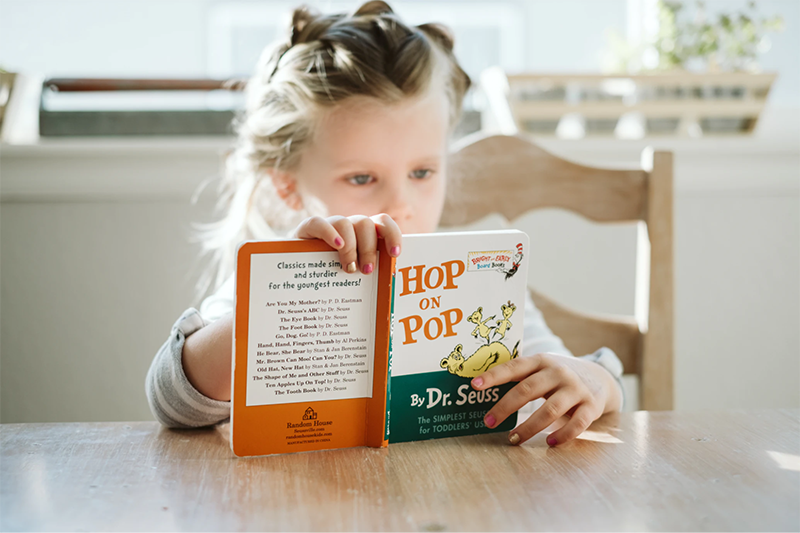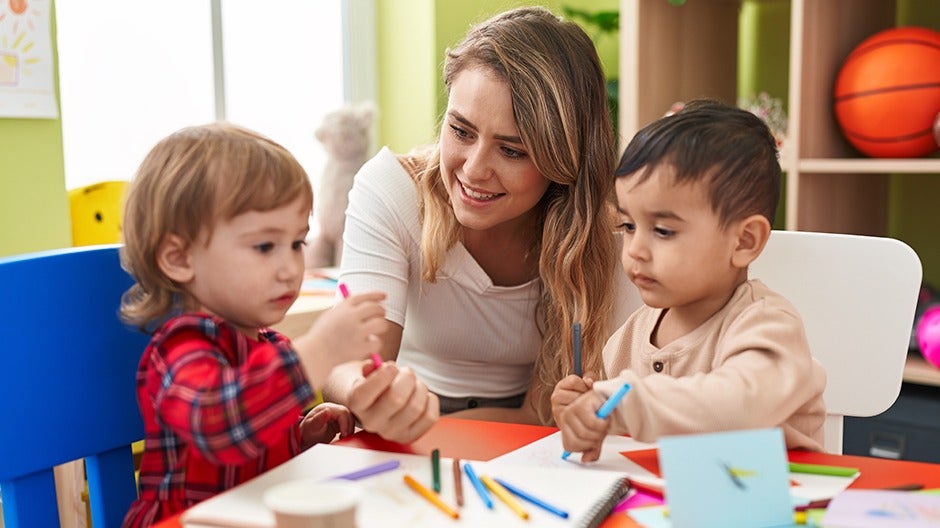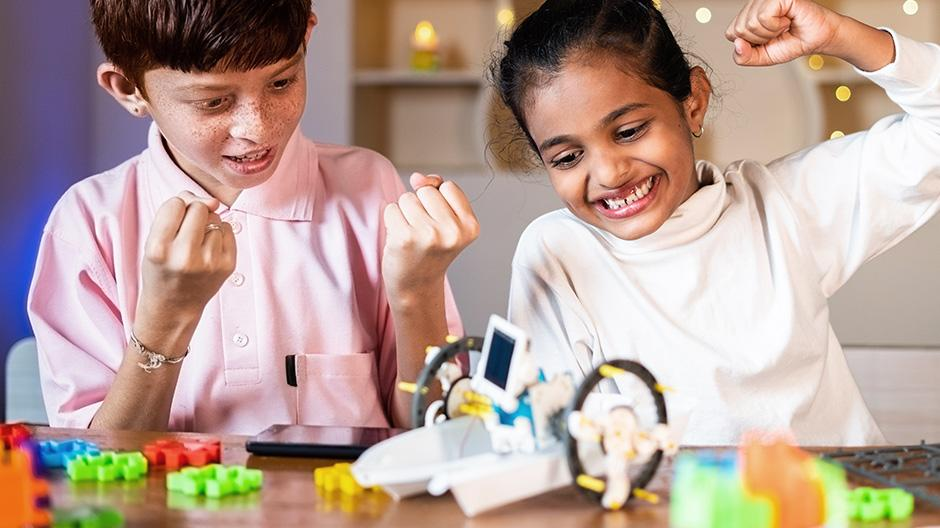Decoding words while reading is an essential skill that all children need to learn. This process can seem daunting at first, but with a bit of guidance from you, your child can learn how to decode with ease.
To help them tackle unknown words, let’s look at what decoding is and what skills they need before it becomes second nature. Then, you’ll find seven tips for supporting their early reading practice.
Let’s dive in!
Table Of Contents
- What Is Decoding?
- Skills Required For Decoding
- The Spelling And Reading Connection
- 7 Tips To Support Your Child’s Early Reading Skills
What Is Decoding?

Decoding is the ability to turn a written word into the correct spoken word. For example, when your child sees the word “cat” in a book or on a piece of paper, they should read the word /k/ /a/ /t/. That’s because these are the three distinct sounds that combine to make the word “cat.”
When your child can see a word, understands the sound each letter represents, and can blend the sounds together from right to left to say the word, they are decoding. This skill is vital because once they can decode words independently, they can begin reading more fluently and with greater comprehension.
Skills Required For Decoding
1) Alphabet Mastery

When your child sees the letter “m,” can they instantly identify the letter and its sound? If not, decoding is going to be a struggle.
Familiarity with the alphabet is a significant predictor of future reading success. Before beginning decoding lessons, make sure your child can tell you the sounds for any letters you will be using.
As a rule of thumb, knowing at least two vowels and eight common consonants can lay the foundation your child will need to take a step into reading. Try the HOMER Explore Letters Kit and then, for further practice, use the letter recognition activities in this post.
When you come back to decoding, your child will have a much better foundation and will be able to move through the process more quickly.
Phonemic Awareness
In addition to knowing what each letter looks like and says, your child needs a certain level of phonemic awareness before they begin reading.
Phonemic awareness is hearing and manipulating individual sounds (or phonemes) in words. Your child’s phonemic awareness grows over time. For example, when they’re first learning to read, they might not be able to hear cat-er-pil-ar and blend it into caterpillar.
As your child develops the ability to hear sounds in words, they can move from hearing syllables in words to hearing individual sounds. They can say if a sound is in the beginning, middle, or end of a word. They can also swap sounds in words (i.e., change the first sound in “cat” to get “hat”).
Remember that phonemic awareness is all about the sounds, not the letters associated with those sounds.
While phonemic awareness has many different components, two of them are especially crucial for reading success — phoneme blending and phoneme segmentation.
Phoneme Blending
Blending phonemes is the ability to take two or more different sounds and put them together to make a word. So, when your child hears /b/ /a/ /t/, they should be able to blend those three phonemes (in the right order) to make the word “bat.”
If your child can do this quickly and easily, they are likely ready to start decoding. If not, take some time to practice phoneme blending before you move on.
Try starting with a two-syllable compound word, like goldfish. Say the individual parts (gold-fish) and have your child tell you what word they hear. When this is easy, try other two-syllable words (ti-ger) and even three-syllable words (com-pu-ter).
Phoneme Segmentation
Segmenting phonemes is taking a word and breaking it into individual sounds. So, if your child hears the word “bat,” they should be able to say /b/ /a/ /t/.
If they can’t yet do this, take time to practice. Try saying a word and have them tell you what individual sounds they hear.
Another strategy is to write a simple word on a piece of paper and ask your child to circle each sound as they say it. Then, keep practicing until they can quickly and easily segment words into their phonemes.
The Spelling And Reading Connection

Spelling and reading go hand in hand. That’s because decoding and encoding (the process of turning a spoken word into a written word) both rely on phonemic awareness.
If your child can’t yet segment words into individual sounds, they will have difficulty spelling. They won’t know what letters they need to write down or in which order to put those letters.
The good news is that if you’ve been working on phonemic awareness, they should be well on their way to being able to decode and encode (spell). And if they aren’t quite there yet, continued practice can help them improve as readers and writers.
7 Tips To Support Your Child’s Early Reading Skills
1) Go Slowly
The tortoise won the race in the tale of the tortoise and hare. Slow and steady is OK! Don’t feel like you have to rush your child through the early stages of reading.
Let them take their time learning to decode words. Start with simple, three-letter, short-vowel words that begin with common consonants. “A” is a good vowel to use. For example, you could try “cat,” “bag,” and “pat.”
Then, as your child gains proficiency, slowly increase the difficulty by using a new vowel (“sip, “bit,” pit”). They might feel overwhelmed and discouraged if you make it too hard too quickly. And you want them to enjoy reading, not view your practice sessions as something to dread.
2) Practice Frequently
A few minutes of reading every day can pay off. It’s much better to spend a little time practicing each day than an hour in a single day and then nothing for a week or two. Decodable books — ones in which the author uses words that are easy to sound out — are a great place to start.
Try to make reading a fun, regular part of your child’s life. Let them choose the books they want to read or take turns reading aloud to each other. The more time you spend reading together, the more your child will learn and improve their decoding skills.
3) Discourage An Over-Reliance On Pictures
While most early readers for kids are full of pictures, those illustrations can get your child in trouble with reading.
You see, the words don’t always match the images. For instance, if your child sees a picture of a mug, they might think they’re supposed to say “cup” or “glass,” depending on what it’s called in your home.
If that happens and a picture clue is misused, that’s OK. Stop your child and help them focus on the letters in the word. So if they say “cup” instead of “mug,” ask them to look at the word again and say each sound they see.
Remind them that while the images can sometimes help, reading each word is the best way to understand what a story says.
4) Have Your Child Point To Each Word

Have you ever lost your spot on the page during reading? Unfortunately, it’s a common error and one that young readers frequently make.
To help your child track where they are, encourage them to point to each word as they say it. In addition to keeping them in the right place, this strategy helps them focus on each word so they don’t skip any as they read.
5) Practice Both Spelling And Reading
As mentioned earlier, spelling and reading go together. So just as you set aside time for reading, you might do the same for spelling.
Spelling practice can take place in a variety of ways. Of course, spelling games are always fun. But you can also create simple flashcards of words they’re learning. Flip through them and have your child read a word. Then, put the card down and ask them to spell it.
As they get better at spelling, they’ll find that reading also becomes easier, and they’re confidence will grow!
6) Stay Positive
Teaching a child to read can sometimes feel challenging, especially if they are struggling. But one of the best ways to help them with decoding is to stay positive.
Even if they’re having a hard time, offer encouraging words. Be their reading cheerleader and celebrate what they’re doing correctly. Praise them if they get a sound correct. Congratulate them when they finally read a word they’ve struggled with for a long time.
After all, your goal is to support them and help them to feel confident in their abilities. As you do that, they’ll be well on their way to becoming a successful reader!
7) Make It Fun

Reading is such an exciting skill, so help your child view it as fun. Here are a few ideas you can try:
- Make a special reading fort
- Let your child pick new books
- Point out words when you’re out and have your child read them
- Let them circle all the words they can read in old newspapers or magazines (how many can they find in a minute?)
- Play reading games
- Have your child practice their new skills with the HOMER app
- Read together
Taking time to do these activities can help make reading fun for your child.
Decoding Success!

Decoding isn’t a simple skill, and it takes a while to master. But, with your help and guidance, your child will get there. And once they do, they’ll be able to read anything that comes their way!
So keep up the good work and let them practice with the HOMER app along the way. It will meet your child where they are and help them progress at their own pace.
No matter what, stay positive and watch your young learner bloom into an amazing reader before your eyes!













